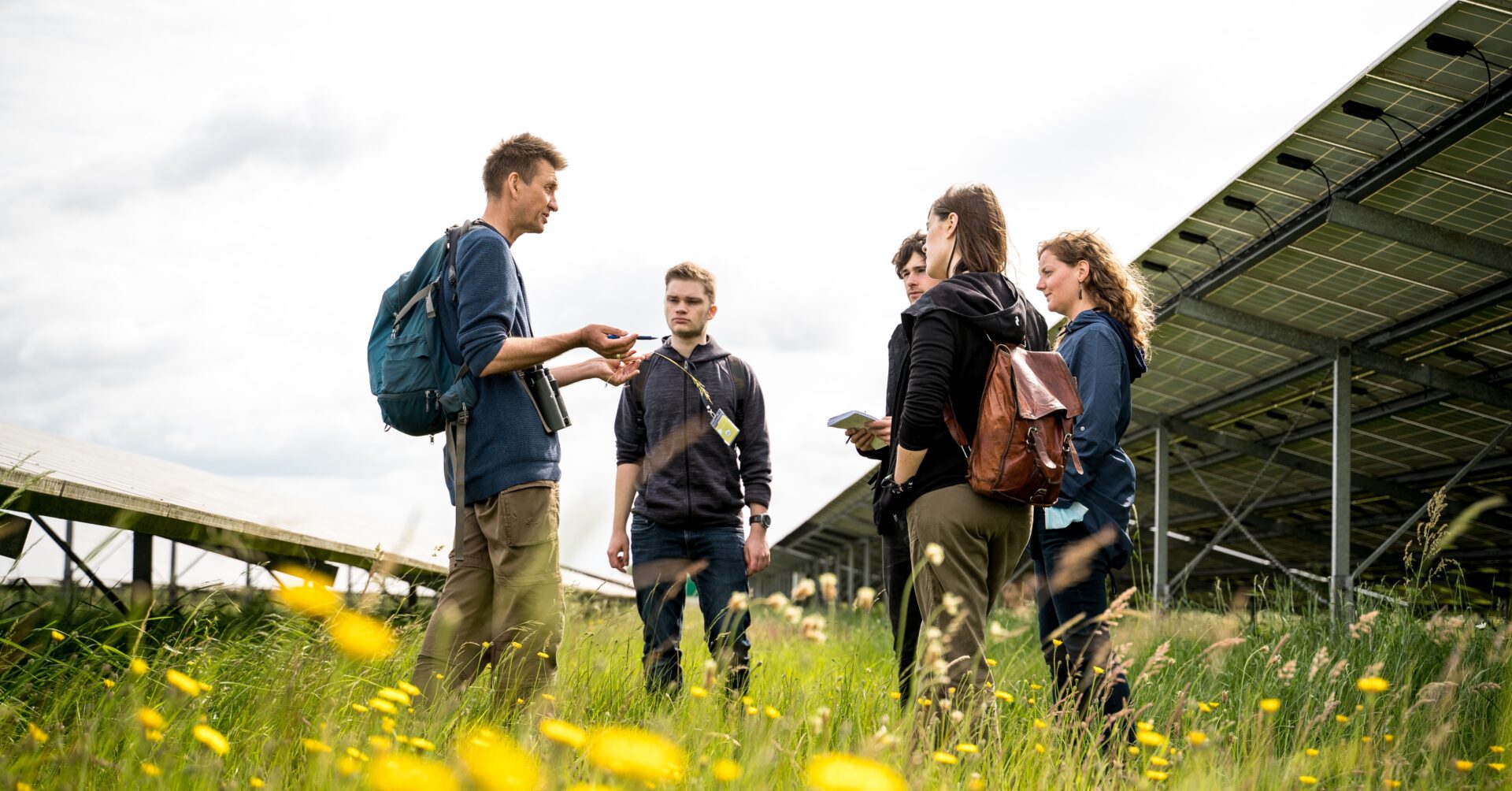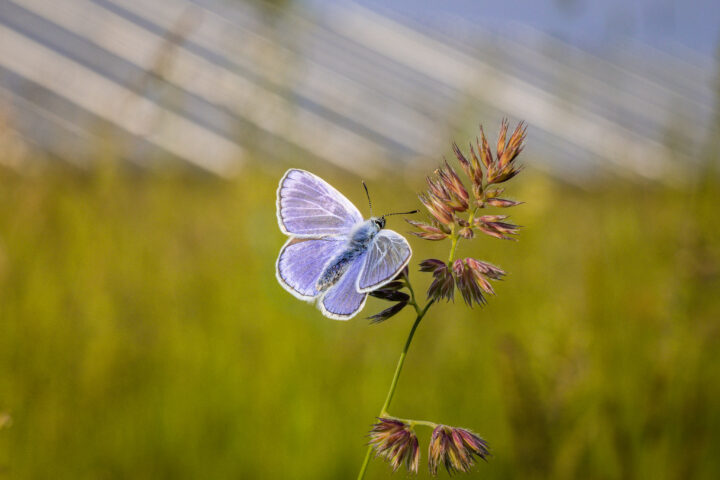Solar parks can do much more than just produce sustainable energy. This was demonstrated by the GEO Day of Nature 2021 impressive proof of this. The Federal Association of the New Energy Economy (bne) and the GEO Magazine opened together with operators on 12 and 13 June 2021 Solar parks throughout Germanyto provide an insight into the flora and fauna that has developed there. The images published today The results of the species study show that the large areas of solar parks represent an important source habitat for endangered animal and plant species can.
In total seven solar parks were by qualified biologists on two days the Flora and fauna recorded. In some of the parks there were also Public and multimedia information events and guided tours. The results of the investigations at the solar parks were presented in GEO magazine (November 2021 issue), summarised in a background paper and published by the bne as fact sheets for each solar park investigated.
The main aim of the cooperation is to Raising awareness of the developing biodiversity in solar parks. All of the species recorded as part of GEO Nature Day represent only a fraction of the biodiversity found in solar parks.
All the parks analysed are Stand locations with different species focal points in each casewhere species-rich habitats have developed for various reasons. Studies show that species-rich habitats develop due to the low level of disturbance in the existing solar parks, the absence of pesticides/fertilisers and extensive cultivation. The knowledge gained will help the solar industry to take conscious measures for new solar parksto support the development of species-rich habitats - as a biodiversity PV.
A large part of the PV industry in Germany has committed itself to this. The "Good planning of ground-mounted PV systems" provides quality standards for planning processes in order to establish best practice as the standard in the design, approval, construction and operation of a ground-mounted PV system. This ensures benefits for local authorities, citizens and nature conservation with positive effects for biodiversity.
Results from the solar parks analysed on GEO Nature Day 2021
- Klein Rheide (Schleswig-Holstein):
The Klein Rheide solar park was created in 2015 on the site of a former gravel quarry. It provides a safe spring habitat for many endangered animal and plant species. The wet and damp areas as well as ferns and flowering plants are exceptional features of this park.
- Olching (Bavaria):
Due to its proximity to the city, the Olching solar park has become an urban island of biodiversity and demonstrates the transformation towards more species-rich habitats in solar parks.
- Eggesin (Mecklenburg-Western Pomerania): Since 2018, land sheep, which are threatened with extinction, have been used for extensive grazing on the site of a former artillery barracks at the Eggesin solar park. Thanks to the special characteristics of the site, the solar park provides a habitat for bats in particular.
- Oranienburg (Brandenburg):
Since 2011, the area used as a military airfield has been put to economic and environmentally friendly use as the Oranienburg solar park. The endangered wheatear (Red List category 1) has also been recorded.
- Rickelshausen (Baden-Württemberg):
With a total of 6 MW, the Rickelshausen solar park on the former district landfill site is the first ground-mounted system in the Lake Constance region. The park provides a valuable habitat for insects in particular.
- Leutkirch (Baden-Württemberg):
The first solar park in Leutkirch was opened in 2011 as a model project for a "sustainable city" and two further parks were added in the following years. The plants are characterised by a succession of dry, grassland-like areas through to damp and wet locations.
- Ering (Bavaria): The Ering solar park, completed in 2014, with partial previous utilisation of a gravel pit, is now home to many different species of flora and fauna.

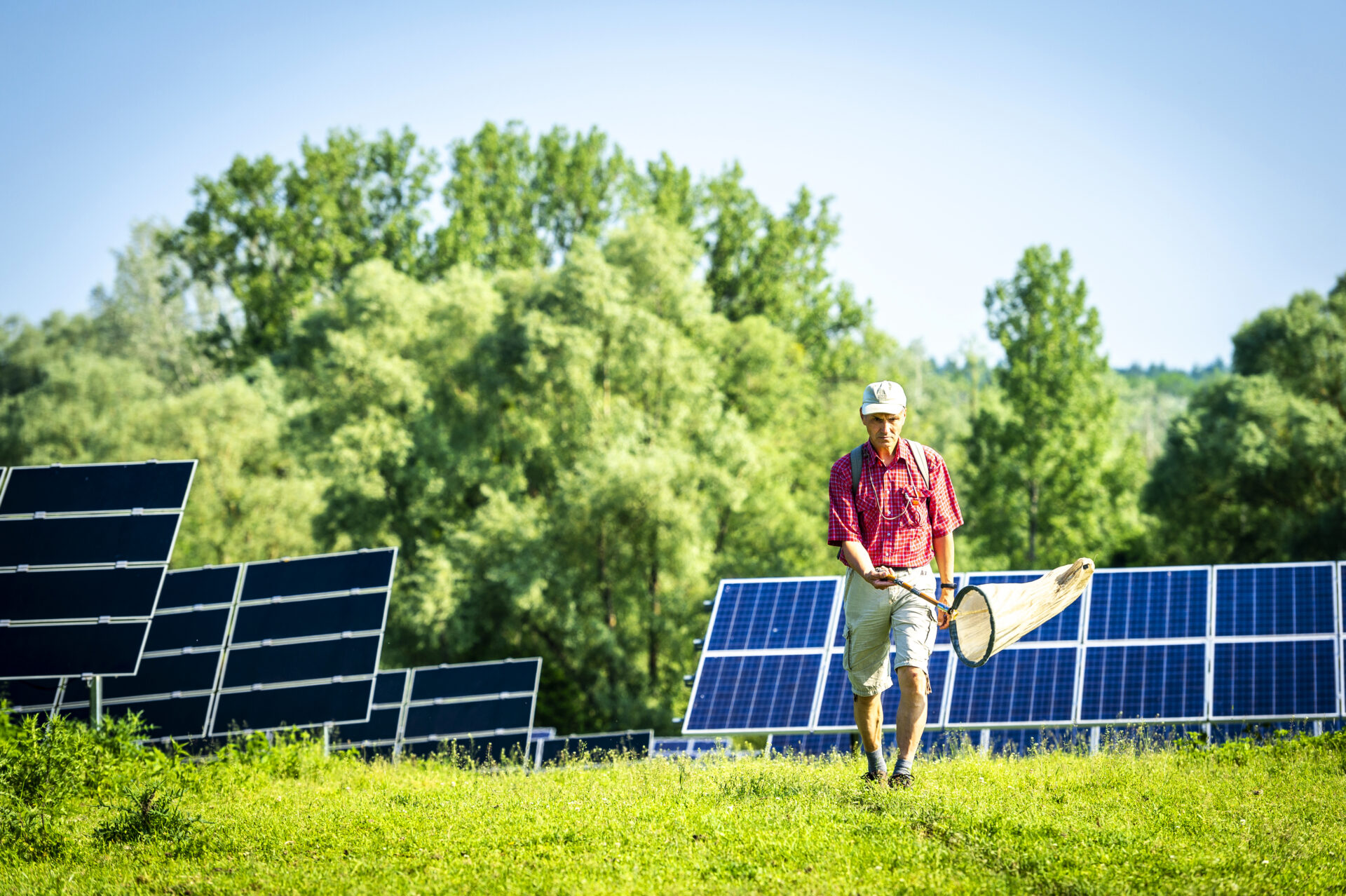
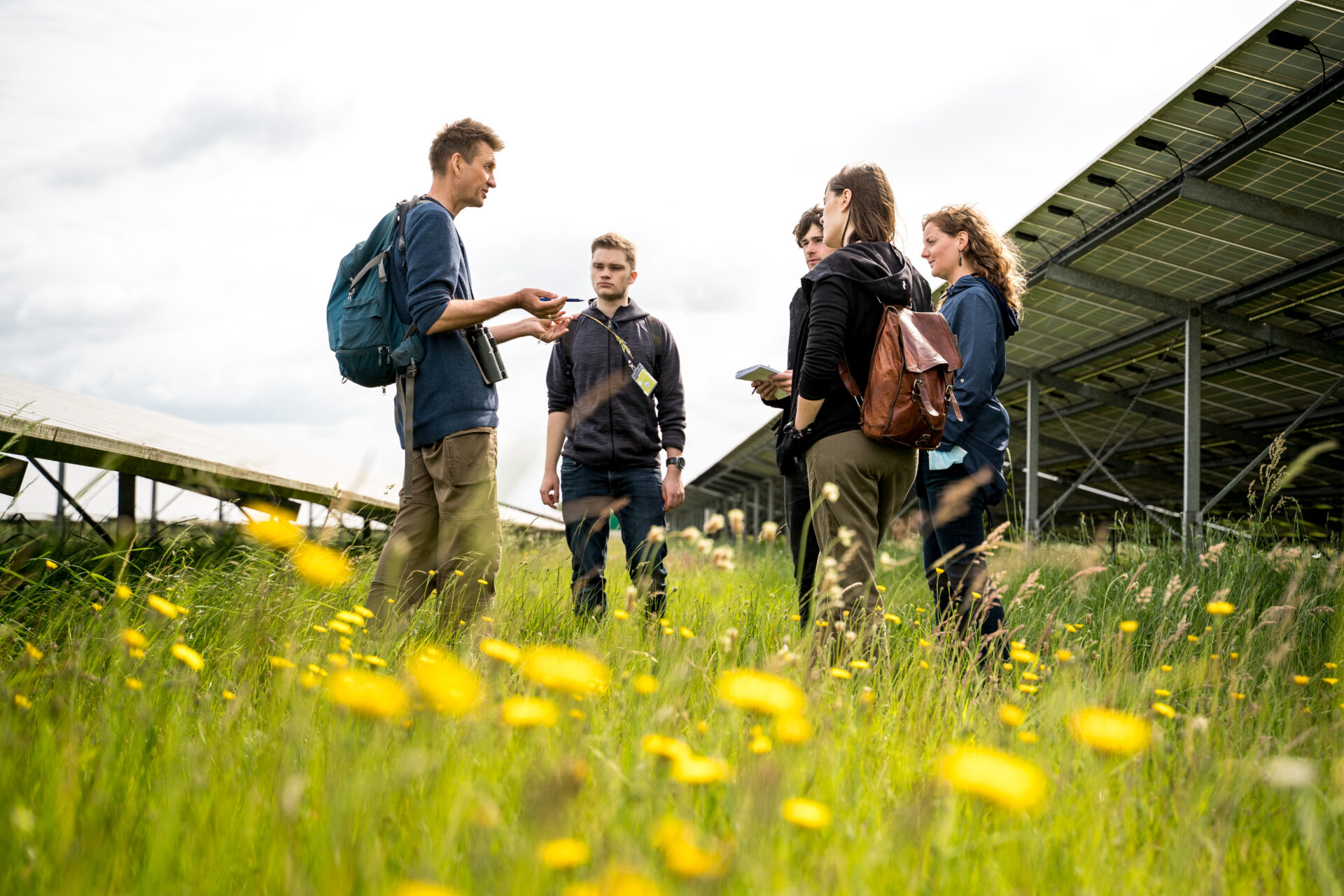
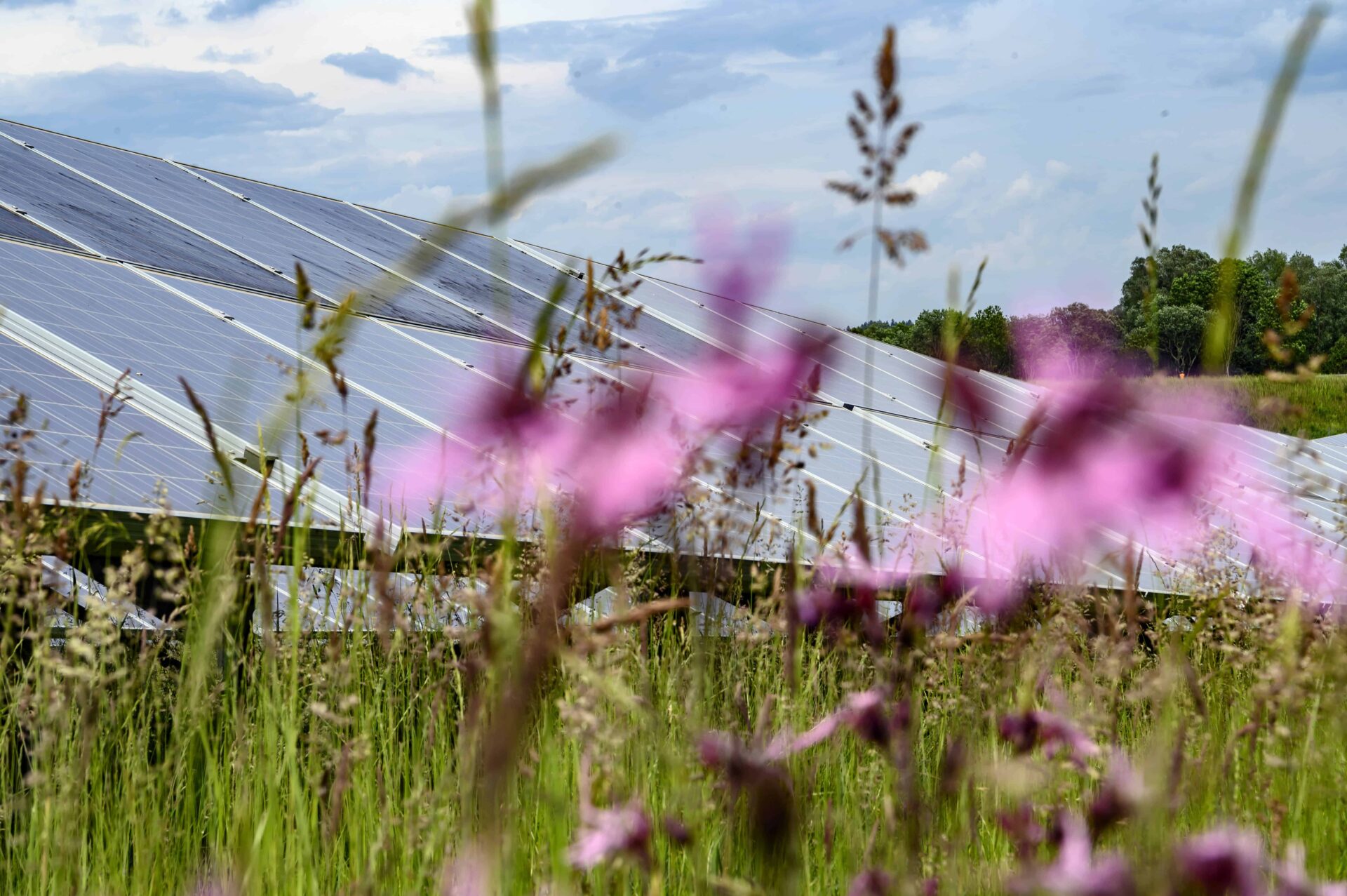

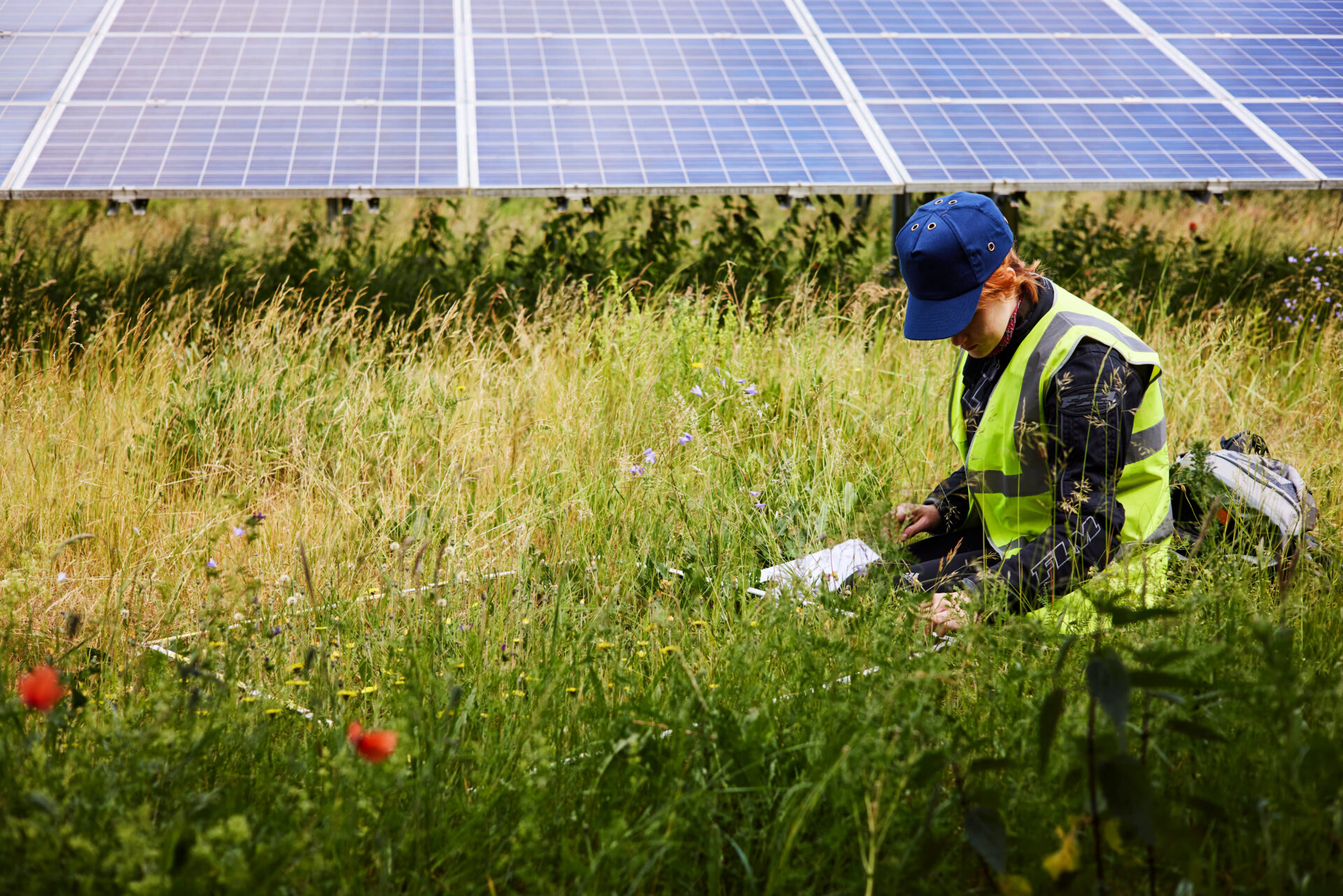
© bne / ARTIS Uli Deck



